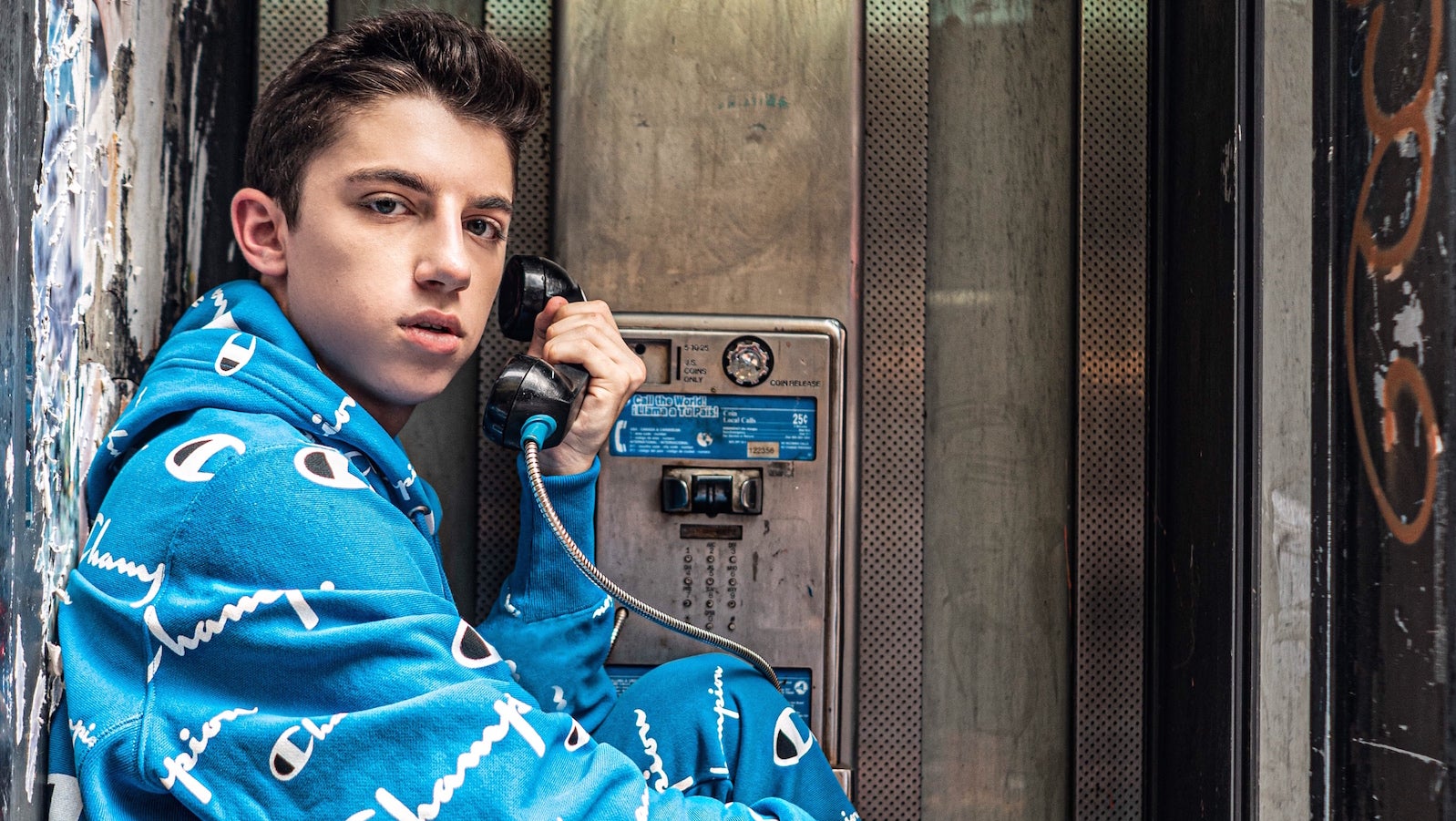A teen chef’s recipe for TikTok success
The key to being successful on TikTok is to grab your audience’s attention—fast. For teenage chef and social media star Eitan Bernath, that means chucking various items over his shoulder. A coffee mug, say, or a package of Oreo cookies. An iPhone, once, when he was presumably feeling confident in his case of choice.


The key to being successful on TikTok is to grab your audience’s attention—fast. For teenage chef and social media star Eitan Bernath, that means chucking various items over his shoulder. A coffee mug, say, or a package of Oreo cookies. An iPhone, once, when he was presumably feeling confident in his case of choice.
“Are you still out here buying bread?” he asks the camera as a loaf sails through the air behind him in one video, knocking over several kitchen items. “Nah, we’re not about that life. We make homemade bread.”
Having gotten his start in the food-media world at age 11 while competing on a kids-only episode of the Food Network show Chopped, Bernath’s success on TikTok seems to come down to a unique mix of cooking chops, business acumen, and a merrily frenetic style.
“The way most people go through the app, they’re just kind of scrolling,” he explains. “If it doesn’t catch their interest in the first five seconds, they’re not going to give the video a chance. So I try to do something in the first five seconds that grabs the audience’s attention.”
This strategy has propelled him to an audience of more than 815,000 followers in just a few months. Bernath is still in high school, living with his family in Bergen County, New Jersey. But he’s cultivated a social-media presence that’s won him consulting work with Instagram and sponsored partnerships with brands like Impossible Foods.
Bernath’s TikTok feed typifies Gen Z’s digital sensibilities. This is a generation that came of age amidst flurries of smartphone notifications and mind-melting endless scrolls. Technology has trained their attention spans to be short. That means the reigning style online, for and by teens and early twentysomethings, is “fast, jumpy, and very funny,” as Taylor Lorenz wrote for The Atlantic last year. It’s a way of communicating that’s hard for outsiders to imitate, a testament to the myriad ways that this generation has managed to grab power away from traditional cultural gatekeepers like the media and advertisers.
Nowhere is the pervasiveness of this style more evident than on TikTok, which traffics in 15-second video clips—though users can string them together for up to a full minute. Brands and entrepreneurs who can figure out how to effectively use the app stand to reach a huge (and young) audience: TikTok boasts more than more than 800 million monthly active users worldwide as of October 2019, 41% of whom are between the ages of 16 and 24.
Quartz spoke with Bernath about how he’s mastered the form, and what others might learn from his approach.

Keep the energy up
Two or three times a day, Bernath uploads videos to TikTok that make cooking seem like an adrenaline rush. Sticks of butter fly through the air. He breathlessly shouts instructions about how to dry-rub tilapia or the importance of cooking scrambled eggs over low heat.
He comes by this attitude naturally: “All this energy is coffee-free,” he revealed in a recent video for whipped coffee (also known as “fluffy coffee”), which garnered 1.6 million views. But he’s also found that shorter, hectic videos do better even on platforms that aren’t capped at 60 seconds.
After his TikTok account took off, Bernath says, he started posting the short videos on other platforms like Instagram and Facebook. “Immediately they started performing on those platforms better than any other videos I’ve ever posted,” he says. He decided to edit his TikTok videos for a series on Instagram’s app for longer-form videos, IGTV, called “One Minute Cooking.” “They literally get about five to eight times as many views as my previous IGTV videos,” he says.

Don’t try too hard to be funny
Bernath’s videos often have a self-deprecating, goofy twist. In one, he promises to fetch his girlfriend so they can cook the perfect date-night dinner, only to remind himself that he’s single. But he says he’s not trying to be known for his jokes. “We’re not looking to get an entire audience of people seriously laughing,” he says. “It’s really just something that’s funny enough that someone would want to send to their friends.”
He also steers clear of dark or controversial jokes that might offend, wanting to be as inclusive as possible—a priority that’s characteristic of his generation. “I personally try to make sure that it’s not degrading to anyone,” he says. He’s conscious that food and cooking in particular can be “a sensitive topic for people, in terms of weight and eating disorders. I make sure that my jokes are never about that.”

Invite debate
Many of Bernath’s best-performing recipes involve comfort food like homemade marshmallows, mashed potatoes, and macaroni and cheese. He also enjoys cooking Indian and Middle Eastern food—partly because people are eager to tell him how he’s messing up.
“Let’s say I make garlic naan and I do one little thing that’s maybe not so traditional,” he says. “It gets people talking.” He clarifies that he always strives to respect the cultural histories of the food he cooks; he simply finds that “doing traditional recipes gets a lot of shares and comments because people like telling you what you did wrong.” He doesn’t mind being corrected.
While Bernath clearly understands what will take off on TikTok, he wouldn’t say no if old-school media came knocking. “My dream has always been to have a show on the Food Network,” he says, “and I think they are sleeping on me.”